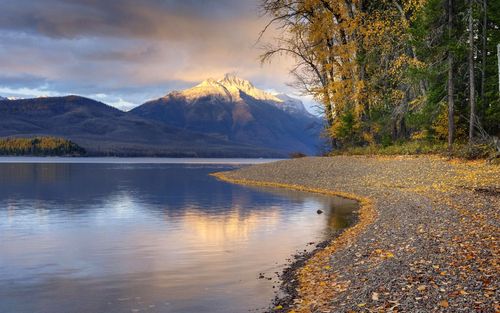Exploring the Intersections of Cultural Geography and Environmentalism
Cultural geography and environmentalism are two areas of study that may seem distinct, but there are many ways in which they intersect. Cultural geography examines the relationships between people and their environment, while environmentalism focuses on preserving and protecting the natural world. By exploring the intersections of these two fields, we can gain a deeper understanding of the ways in which culture affects our environment, and how our environment shapes culture.
What is Cultural Geography?
Cultural geography is the study of the relationship between people and their environment, with a particular focus on how culture shapes the environment, and how the environment shapes culture. Cultural geographers look at things like the ways in which people use and interact with their environment, as well as the cultural and social factors that influence these interactions. They also examine issues like language, religion, and politics, and how these factors intersect with geography and the environment.
What is Environmentalism?
Environmentalism is a movement focused on protecting and preserving the natural world. This includes efforts to reduce pollution, conserve resources, and protect endangered species and habitats. Environmentalism has its roots in the 19th century conservationist movement, but it gained mainstream popularity in the 1960s and 70s as concern about pollution and habitat destruction grew. Today, environmentalism is a global movement that encompasses a broad range of issues and concerns.
How do Cultural Geography and Environmentalism Intersect?
There are many ways in which cultural geography and environmentalism intersect. For example, cultural norms and practices can have a significant impact on the environment. For instance, in many parts of the world, meat consumption is a cultural norm. However, meat production is a significant contributor to greenhouse gas emissions, deforestation, and other environmental issues. Conversely, environmental conditions can shape cultural norms and practices. For example, communities that live in areas prone to natural disasters may have developed unique practices and rituals to cope with these events.
Another way in which cultural geography and environmentalism intersect is through the concept of place attachment. Place attachment refers to the emotional and psychological connections that people have to particular places. Cultural geographers argue that these connections are shaped by a wide range of factors, including the physical environment, social and cultural influences, and personal experiences. Environmentalism recognizes the importance of place attachment in terms of motivating people to care for and protect the natural world.
Case Study: The Maasai People of East Africa
The Maasai people of East Africa provide a fascinating example of the intersections of cultural geography and environmentalism. The Maasai are a nomadic pastoralist people who have lived in the region for centuries. Their culture is deeply intertwined with their environment, and they have developed unique practices and traditions that allow them to live in harmony with nature.
However, in recent decades, the Maasai way of life has come under threat from a variety of factors, including climate change, land degradation, and encroachment from agriculture and urbanization. Many Maasai people have been forced to abandon their traditional way of life and adapt to new environmental and cultural realities.
In response to these challenges, the Maasai have developed new conservation practices that allow them to continue to live on the land while protecting the environment. For example, they have created community-owned conservancies that allow them to control access to grazing and water resources, while also promoting ecotourism and wildlife conservation.
Conclusion
The intersections of cultural geography and environmentalism are complex and multifaceted. By understanding these intersections, we can gain a deeper appreciation for the ways in which culture and the environment are intertwined, and how our actions affect the world around us. Studying the intersections of these fields can also help us develop more effective strategies for protecting and preserving the natural world, while also promoting equity and justice for all people.
(Note: Do you have knowledge or insights to share? Unlock new opportunities and expand your reach by joining our authors team. Click Registration to join us and share your expertise with our readers.)
Speech tips:
Please note that any statements involving politics will not be approved.
